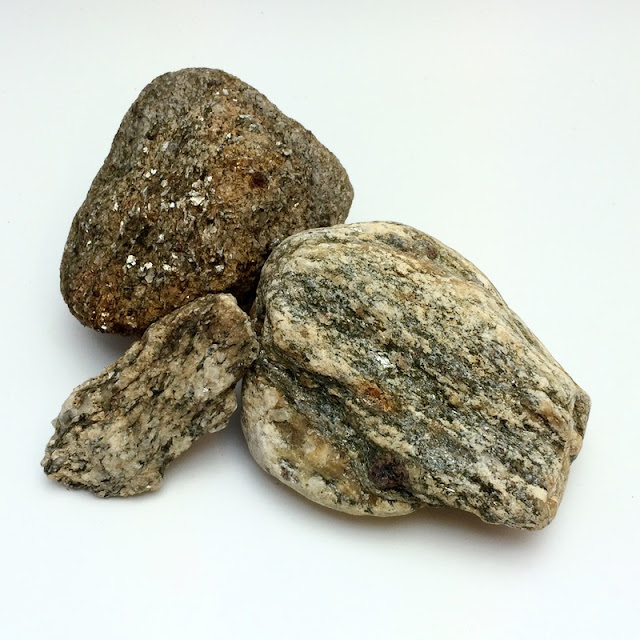Hunting for natural treasures is one of my favourite pastimes. Sadly one that I don’t get to do as much as I did. I could often be found up the side of a hill filling my pockets with my own bodyweight in rocks, on a beach hunting for shells and glass, or even scanning gravel drives for interesting bits and bobs. They are a fantastic (and free) resource for using in your jewellery.
 |
| Pebbles on the beach |
“Beachcombing is an activity that consists of an individual "combing" (or searching) the beach and the intertidal zone, looking for things of value, interest or utility. A beachcomber is a person who participates in the activity of beachcombing.”
 |
| Beach combing |
Most people in the UK are lucky enough to be no more than a couple of hours from a beach and winter is the perfect time to wrap up and head out to look for some treasure. After storms you can find all sorts of wonderful things fallen from the rocks, washed up by the tide, or unearthed by the waves.
 |
| Hunting after a storm |
It’s very important to consider safety before you head out, particularly in bad weather. Always make sure someone knows where you will be and when to expect you home, and stay away from cliff faces and edges. Find out the tide times and make sure know when to expect the tide to return. A lot of UK beaches have sand banks where you can become stranded in an instant after the tide comes in behind you so make sure to keep an eye on things as you’re collecting.
 |
| Fossil on the beach |
Another thing to consider is how much heavier you will be when your pockets/rucksack are full. I know this from experience after rolling down a hill in Derbyshire when I lost my balance coming down after a good day collecting.
 |
| Jack & Jill |
As well as beaches - mountains, lakes, and even your back garden can be great places to find natural materials to work with. Fossils can be found inland and rivers and streams can turn up beautiful smooth pebbles and semi precious stones.
Amateur geology (known as rockhounding in the United States) is the recreational study and hobby of collecting rocks and mineral specimens from their natural environment.
 |
| I can dream of finding diamonds |
If you know where to look and you have keen eyes you can find all sorts of wonderful things.
Some of my collection includes Blue John from Derbyshire,
 |
| Blue John |
Rock with garnets from the West coast of Scotland.
 |
| Garnets |
Pebbles from the Lake District polished in my rock tumbler.
 |
| Mixed pebbles |
And my prize fluorite crystals from Derbyshire.
 |
| Square Fluorite Crystal |
 |
| Hand polished fluorite crystal |
And it’s not just rocks, a stroll along the beach in Falmouth turned up these treasures...
 |
| Sea glass |
And other mixed shells, coral, and tiny mussel pearls from Scotland.
 |
| Coral & Shells |
 |
| Mussel shell with pearls |
Sparkly mica rocks collected from the banks of Loch Morar.
 |
| Rock with Mica |
And finally, another prized possession, I didn't find this one myself, but it was given to me by a German Friend collected in Dorset. It's iron pyrite and I'd love to break it open but daren't in case it's really boring inside.
 |
| Pyrite nodule |
I’ve not got as far as using anything I’ve collected in one of my designs, I think I just like collecting things! But some very talented people have….
And our very own Niky created this stunning piece with a beach pebble.
I’ve always loved the idea of creating from start to finish, and collecting your own components from the land around you is a fantastic way to do this.
So wherever you are, get out and get exploring! The Natural Trust website should start you off with some great places to visit
http://www.nationaltrust.org.uk/lists/must-visit-places-for-fossil-hunters
And if you’re lucky enough to live in the US there are some incredible places to visit with really amazing precious stones.
http://www.fodors.com/news/top-7-places-to-3648
I think I need to book us a family holiday to go and hunt for some black opals!!!









































